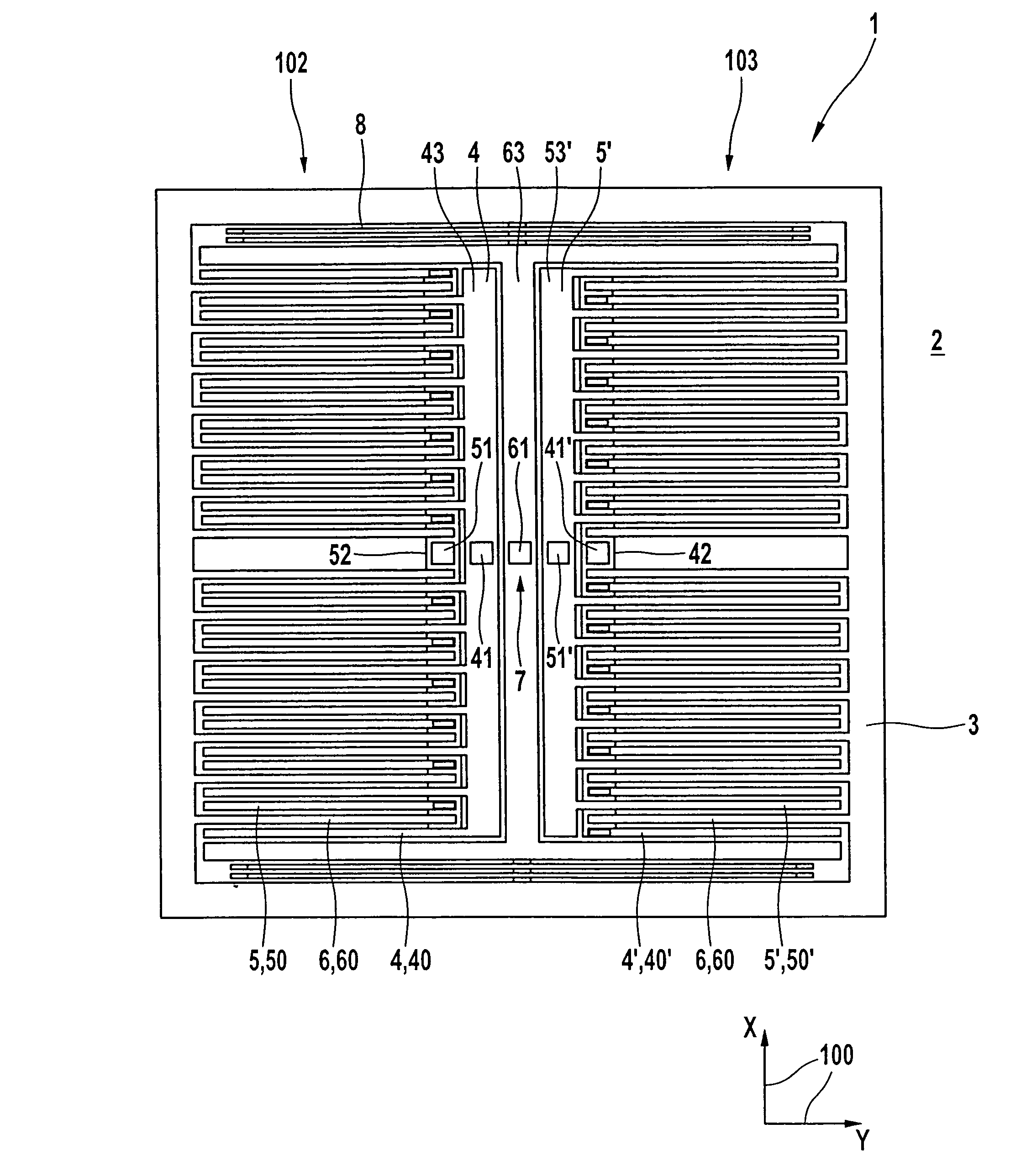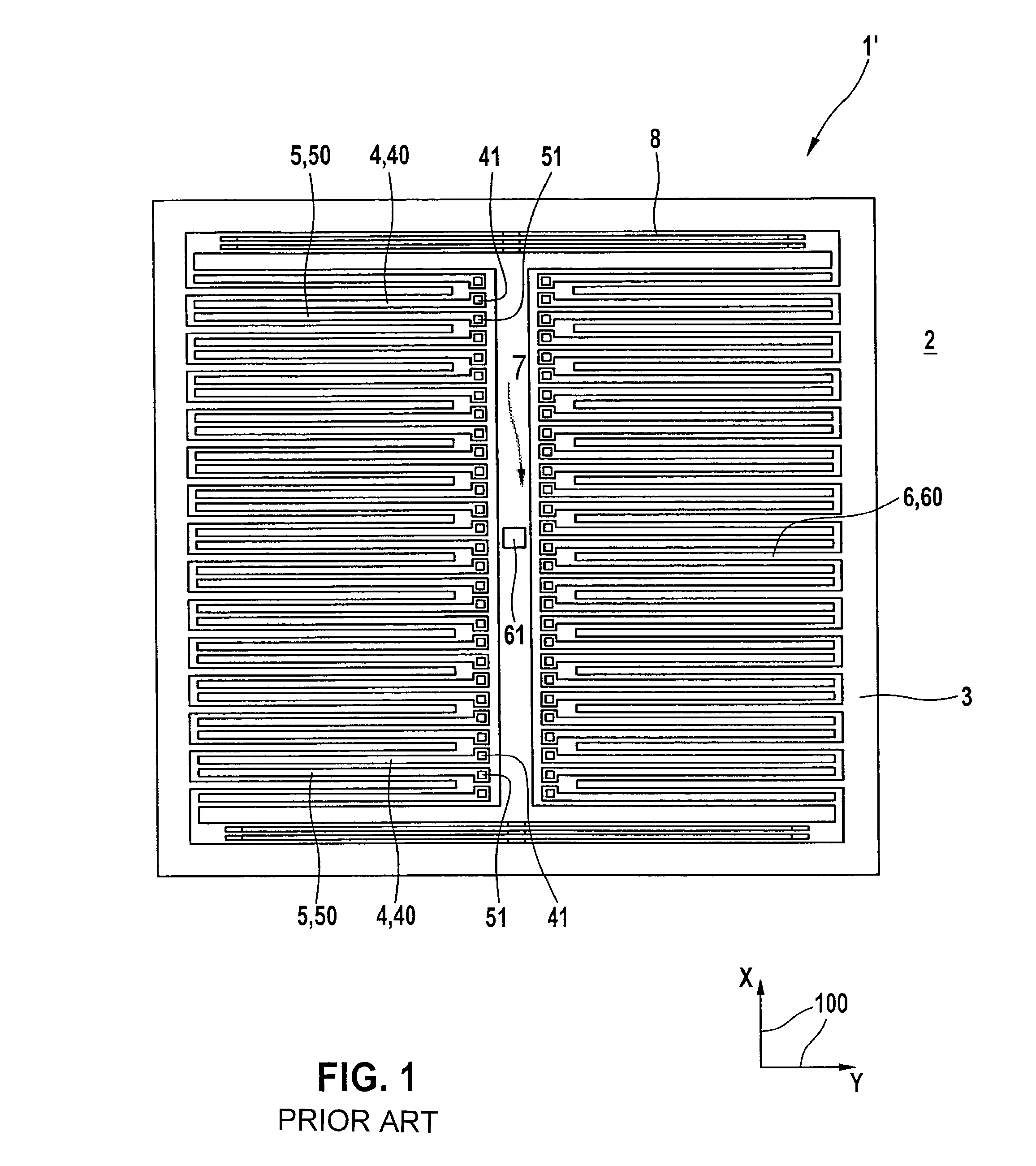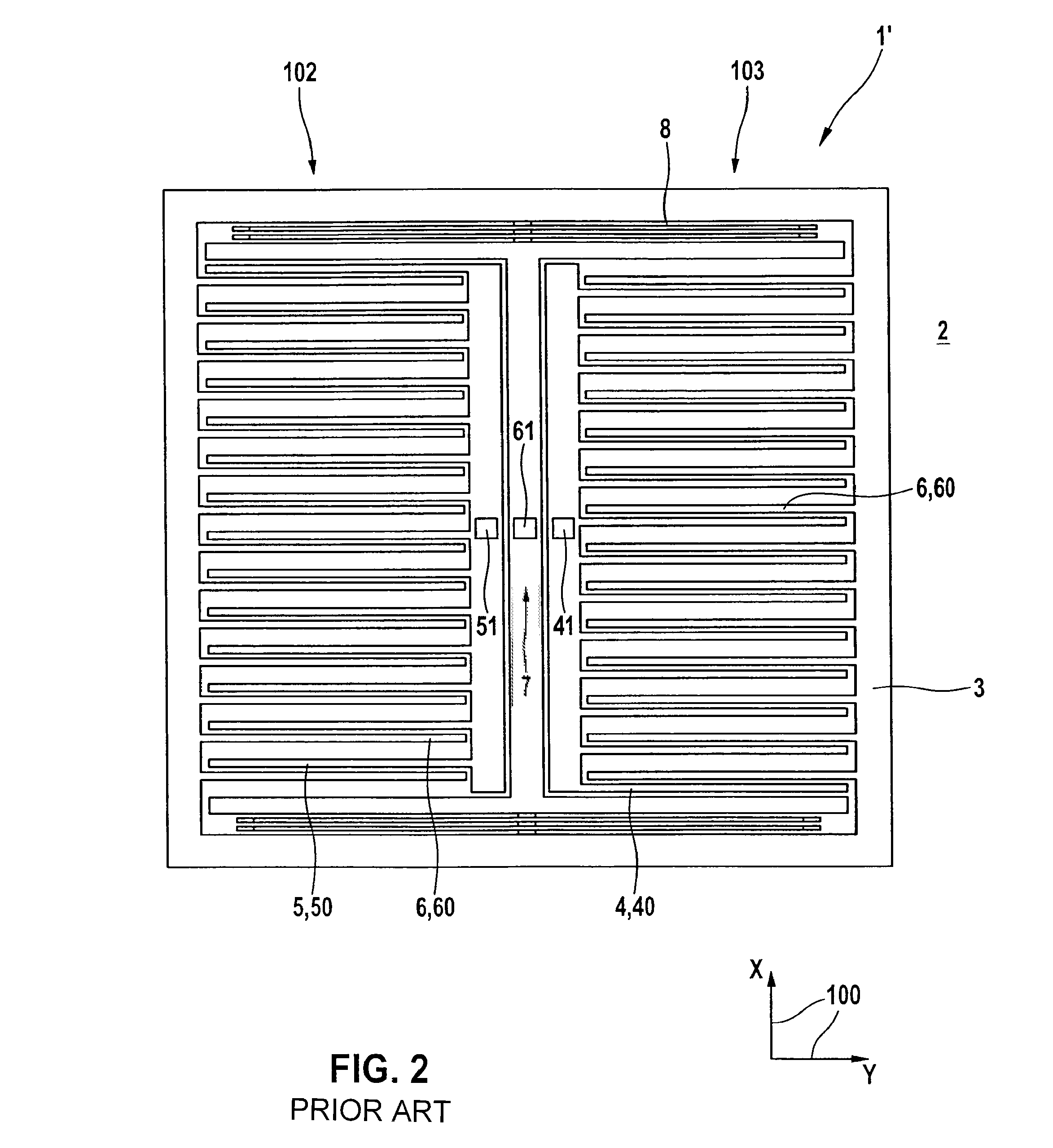Micromechanical structure and method for manufacturing a micromechanical structure
a micromechanical structure and micromechanical technology, applied in the direction of contact member manufacturing, acceleration measurement using interia forces, instruments, etc., can solve the problem of not providing a differential evaluation of the deflection of the surface structure, and achieve the effect of simple and cost-effective manufacture and maximum stress decoupling
- Summary
- Abstract
- Description
- Claims
- Application Information
AI Technical Summary
Benefits of technology
Problems solved by technology
Method used
Image
Examples
Embodiment Construction
[0020]FIG. 1 illustrates a schematic top view of a micromechanical structure 1′ according to the related art. Micromechanical structure 1′ includes a substrate 2 which has a main plane of extension 100, and a seismic mass 3 which is movable relative to substrate 2. Seismic mass 3 is coupled via spring elements 8 to a third anchoring element 61 which is fixedly connected to substrate 2 in a central region 7 of micromechanical structure 1′. Seismic mass 3 also includes a counterelectrode structure 6 which has a plurality of third finger electrodes 60. Micromechanical structure 1′ also includes a first and a second electrode structure 4, 5. First electrode structure 4 includes cantilevered first finger electrodes 40 which are each fastened to substrate 2 via independent first anchoring elements 41. Second electrode structure 5 includes cantilevered second finger electrodes 50 which likewise are each fastened to substrate 2 via independent second anchoring elements 51. Third finger elec...
PUM
| Property | Measurement | Unit |
|---|---|---|
| micromechanical structure | aaaaa | aaaaa |
| seismic mass | aaaaa | aaaaa |
| surface structure | aaaaa | aaaaa |
Abstract
Description
Claims
Application Information
 Login to View More
Login to View More - R&D
- Intellectual Property
- Life Sciences
- Materials
- Tech Scout
- Unparalleled Data Quality
- Higher Quality Content
- 60% Fewer Hallucinations
Browse by: Latest US Patents, China's latest patents, Technical Efficacy Thesaurus, Application Domain, Technology Topic, Popular Technical Reports.
© 2025 PatSnap. All rights reserved.Legal|Privacy policy|Modern Slavery Act Transparency Statement|Sitemap|About US| Contact US: help@patsnap.com



